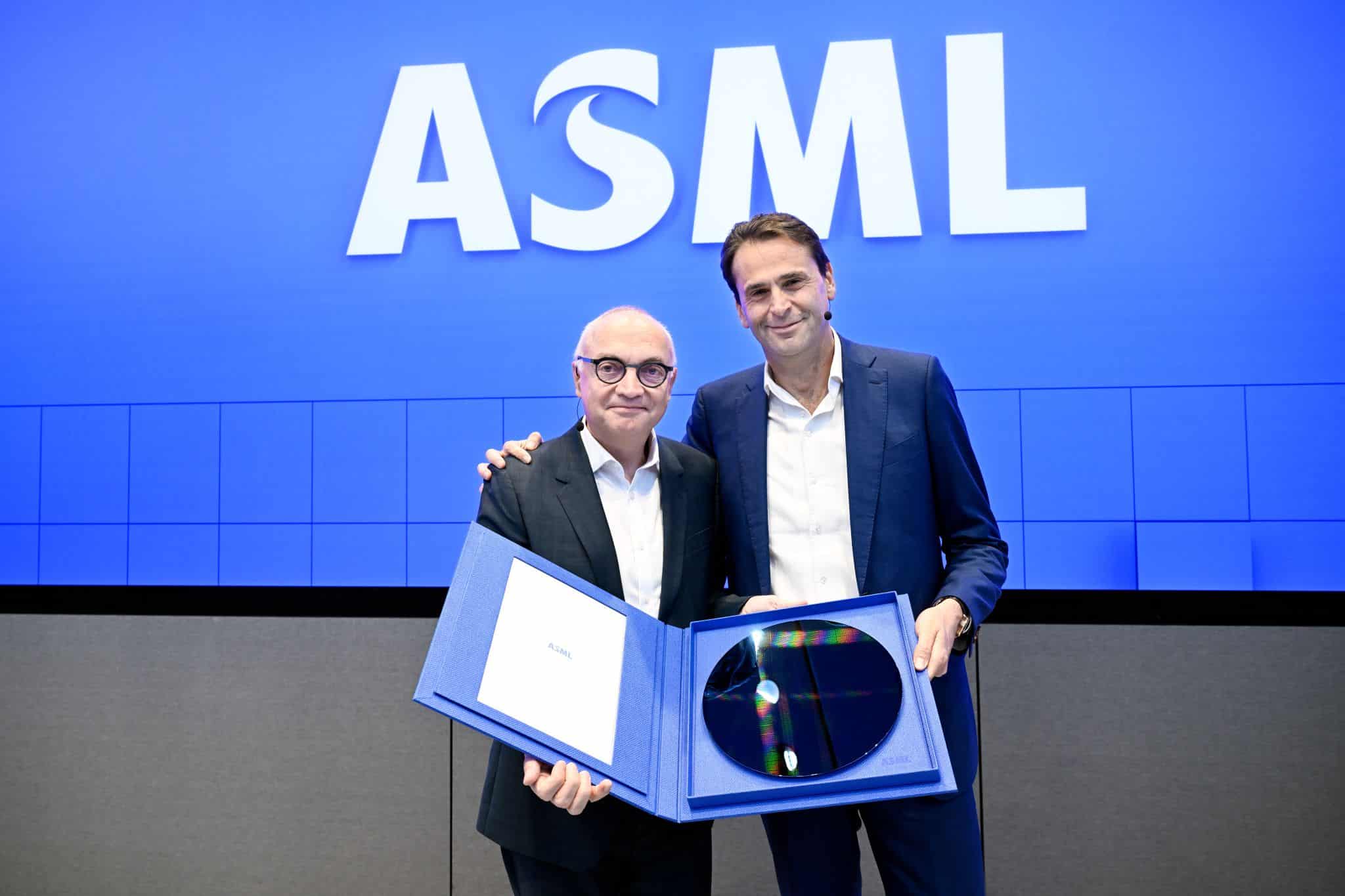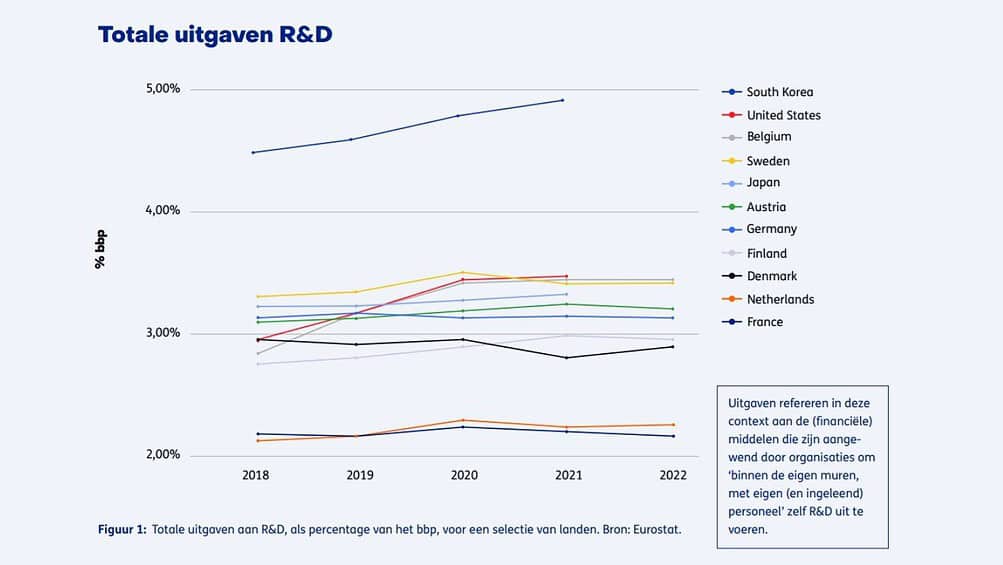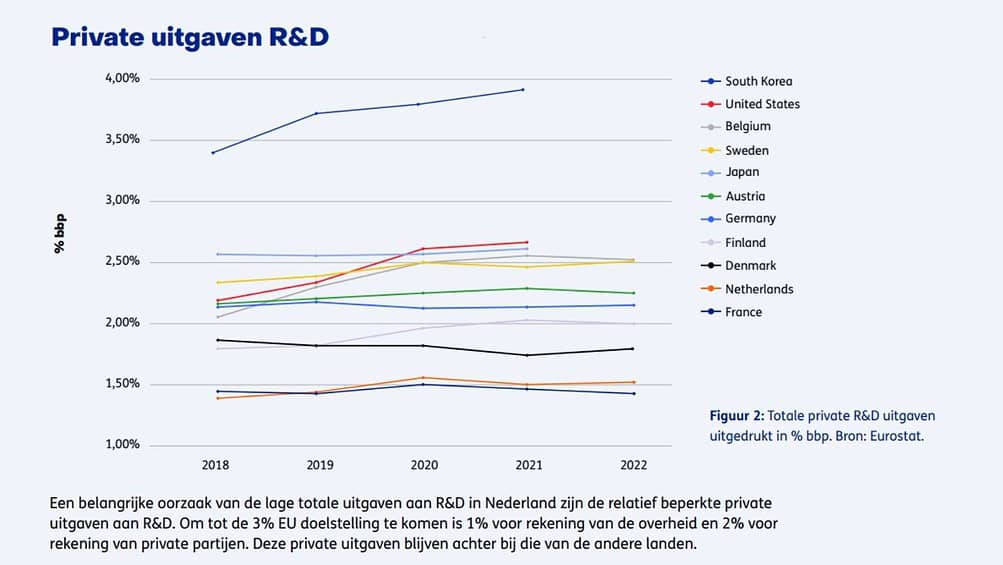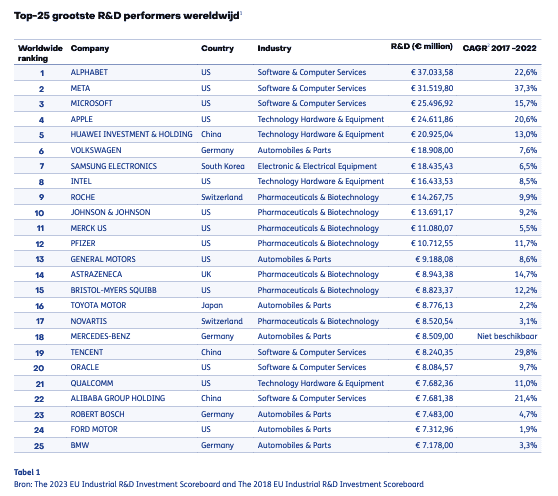
The Netherlands invests 2.3% of gross domestic product (GDP) in research and development (R&D), which is 22 billion euros annually. This puts our country far behind countries such as Germany (3.1%), Belgium (3.5%) and South Korea (4.9%). The main cause is limited private investment in R&D. The largest company registered in the Netherlands, ASML, ranks 64th worldwide in terms of R&D investments with 3 billion euros by 2022. By comparison, Apple ranks #4, and in the same year, with 24 billion euros, it invested more than all of the Netherlands combined. That’s according to a new fact sheet in which TNO compares the Netherlands’ public and private R&D spending with that of countries in the EU and beyond.
Why is this important?
Compared to other countries, the Netherlands spends much less on research (R&D), mainly due to lagging private investment. This emphasizes the importance of a good business climate. There are no Dutch companies in global Top 50 private parties with highest R&D spending, the highest ranking being ASML at spot 64. The Netherlands does have a relatively large share of fundamental research focused on new knowledge acquisition, which is less likely to lead to practical applications.
Netherlands surpassed internationally
Many neighboring countries are already above the EU standard of investing 3% of GDP annually in research and development (R&D). To illustrate, the gap between NL (2.3%) and Germany (3.1%) is about 7 billion a year in R&D spending. Outside Europe in major industrialized countries like Japan and the US, spending is even higher. This trend is in line with Draghi’s recently published report to increase European commitment to innovation in order to strengthen European competitiveness.

Lagging private spending
Zooming deeper into the figures, it appears that a major reason for the low overall spending on R&D is due to the relatively limited private spending on R&D. To arrive at the 3% target, 1% is accounted for by government and 2% by private parties. As can be seen in the figure below, this private spending lags behind.

Consequently, the National Growth Fund (NGF), which has provided an increase in public R&D spending in recent years, has not yet led to an increase in private spending. This reluctance of companies may have to do with the much-discussed deterioration of the Dutch business and investment climate, especially for industry. Among the causes are the increased regulatory burden, relatively high energy prices and all kinds of congestion such as on the electricity grid, roads, housing and the labor market.

This is also reflected in the five Dutch companies with the highest R&D expenditures, with ASML at 3 billion worldwide in position 64 of the 2023 EU Industrial R&D Investment Scoreboard. Private R&D spending in the Netherlands is mainly done by large companies in the Netherlands. Companies with 250 or more employees represent about 5% of the total business population in the Netherlands. These companies account for 67% of total R&D spending in our country.

In addition, the distribution of R&D spending between countries is striking. The Netherlands invests almost a third in basic research, focused on new knowledge without any specific application or use already in sight. While other major industrialized countries like Japan, the U.S. and South Korea focus their investments mainly on valorization and applied research focused on products and services. The Netherlands invests proportionately a lot in academic research but our country does not sufficiently succeed in bringing knowledge to the market.
The road back to the international innovation top
Earlier, TNO calculated that private R&D spending must increase by some 6.7 billion per year to achieve the 3% ambition. This means that companies must be encouraged to invest in R&D precisely in our country. The venture capital sector also plays an important role in creating an effective innovation ecosystem. In addition, much Dutch private capital is in pension funds (more than 1,600 billion euros according to De Nederlandsche Bank) that can also be used for R&D.


